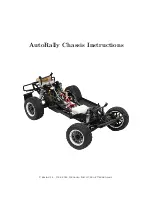
SYSTEM OPERATION
18
6. One 90° elbow should be secured to the combustion air
intake connection.
NOTE:
For installations at or above 7,000 feet altitude, use 3”
venting.
VENT / FLUE PIPE TERMINATIONS
12" MIN. ABOVE
HIGHEST ANTICIPATED
SNOW LEVEL
12" MIN.
VENT/FLUE TEE (
or
45° ELBOW
TURNED DOWN or
90° ELBOW TURNED
DOWN
OPTIONAL)
Horizontal Termination (Single Pipe)
Above Highest Anticipated Snow Level
Figure 11
NOTE:
If either a 90 degree or 45 degree elbow is used for
termination, it must be pointed downward.
The vent / flue pipe may terminate vertically, as through a
roof, or horizontally, as through an outside wall.
Vertical vent / flue pipe terminations should be as shown in
the following figure. Refer to
Vent / Flue Pipe and Combus-
tion Air Pipe - Termination Locations
for details concerning
location restrictions. The penetration of the vent through the
roof must be sealed tight with proper flashing such as is used
with a plastic plumbing vent.
Horizontal vent / flue pipe terminations should be as shown in
the following figure. Refer to
Vent/Flue Pipe and Combustion
Air Pipe.
To secure the pipe passing through the wall and
prohibit damage to piping connections, a coupling should be
installed on either side of the wall and solvent cemented to
a length of pipe connecting the two couplings. The length of
pipe should be the wall thickness plus the depth of the socket
fittings to be installed on the inside and outside of the wall.
The wall penetration should be sealed with silicone caulking
material.
NOTE: Terminate both pipes in the same pressure zone
(same side of roof, no major obstacles between pipes,
etc.).
90º OR 45°
ELBOW
12" MIN. TO GRADE OR
HIGHEST ANTICIPATED
SNOW LEVEL
6” MAX
4” MIN
Standard Horizontal Terminations (Dual Pipe)
Figure 15
DIRECT VENT (DUAL PIPE) PIPING
Direct vent
installations require both a combustion air intake
and a vent/flue pipe. The pipes may be run horizontally and
exit through the side of the building or run vertically and exit
through the roof of the building. The pipes may be run through
an existing
unused
chimney; however, they must extend a
minimum of 12 inches above the top of the chimney. The
space between the pipes and the chimney must be closed
with a weather tight, corrosion resistant flashing. Both the
combustion air intake and a vent / flue pipe terminations must
be in the same atmospheric pressure zone. Refer to
Vent/
Flue and Combustion Air Pipe - Termination Locations
or
Concentric Vent Termination
for specific details on termina
-
tion construction. For details concerning connection of pipes
to the furnace, refer to the
Vent / Flue Pipe and Combustion
Pipe - Standard Furnace Connections
or
Alternate Furnace
Connections.
Alternate Horizontal Vent Termination (Dual Pipe)
Figure 16
90°
ELBOWS
12" MIN. ABOVE
HIGHEST ANTICIPATED
SNOW LEVEL
3” - 24”






































